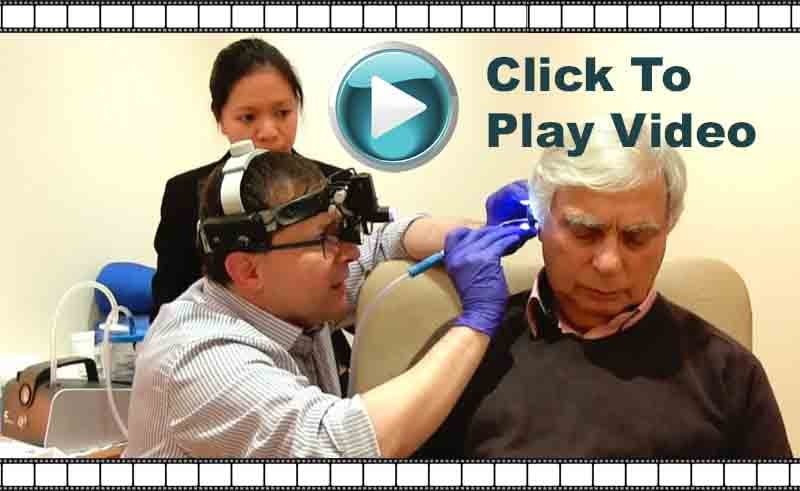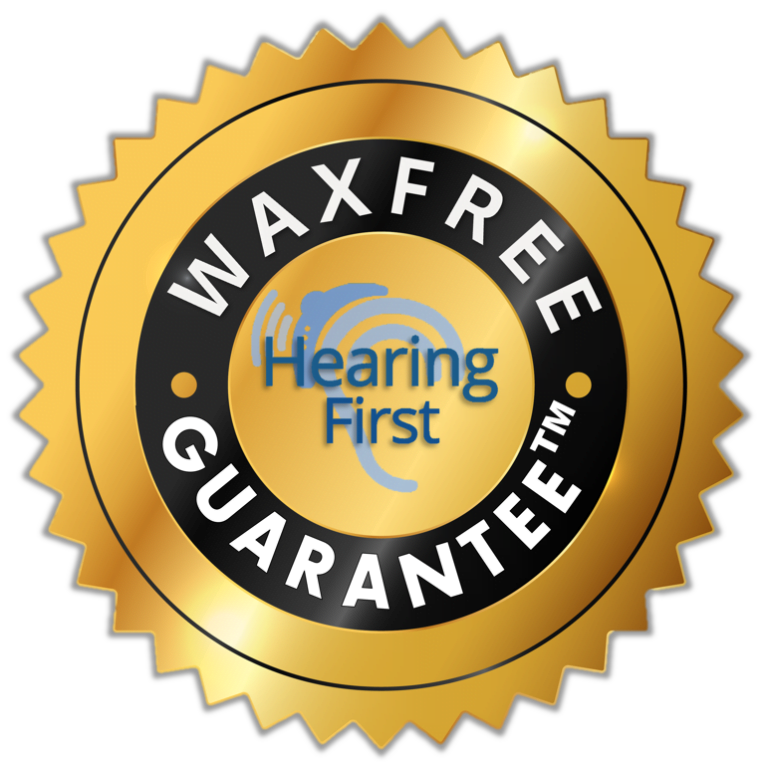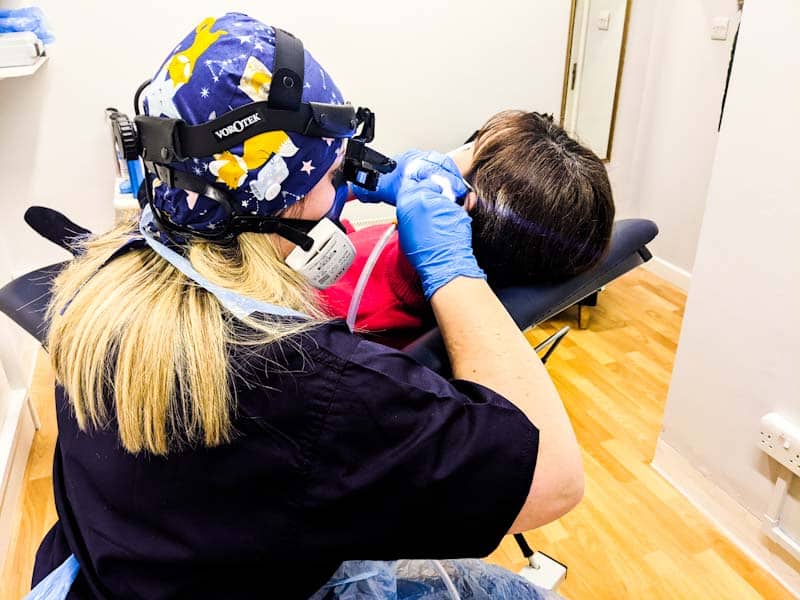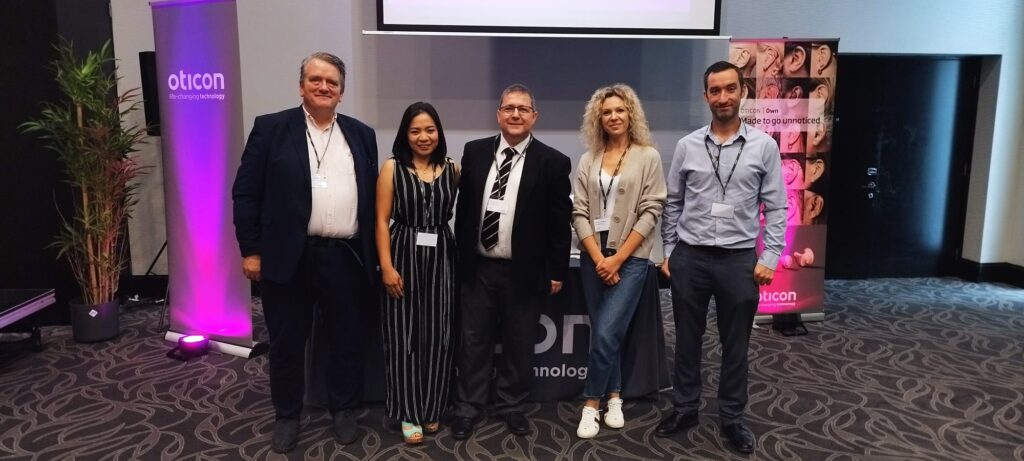Last Updated on 28th July 2023 by Admin
What Is Micro Suction?
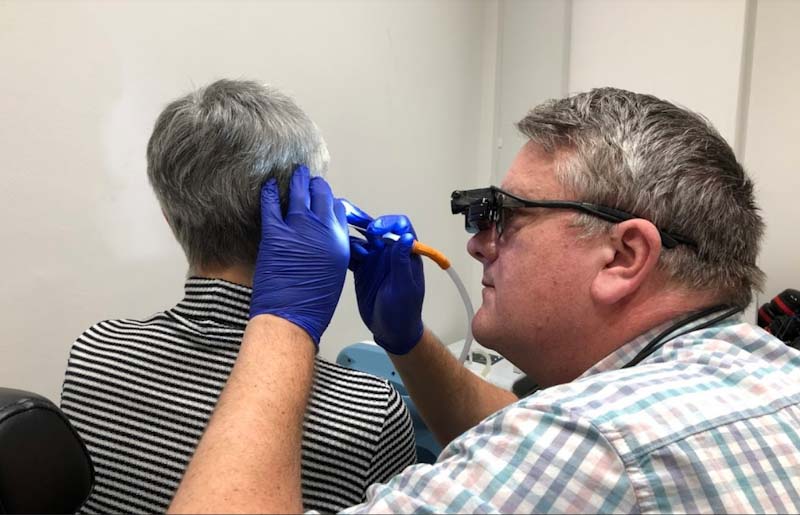
Microsuction earwax removal is the removal of ear wax from the ear using a medical suction unit using an illuminating microscope. It is around 100 times safer than the old syringing method. A microsuction practitioner must be an appropriately trained, registered and insured professionally. Typically, microsuction is performed by a doctor, ENT surgeon or an Audiologist. Our clinics are staffed by Audiologists or Assistant Audiologists under the supervision of an HCPC Registered Hearing Aid Dispenser.
How Safe Is Micro Suction?
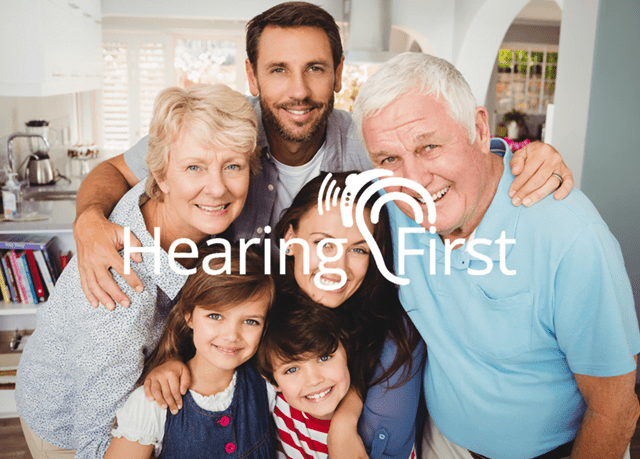
Micro suction introduces no water into the ear and only removes wax from the ear using gentle suction. Our Audiologists use a portable Vorotek O-Scope ENT microscope to see into your ear canal in great detail. This way, they can see exactly what they are doing inside your ear. The suction wands are sterile, so the risk of infection is virtually zero. For these reasons, microsuction is considered the safest method of removing wax from the ear, and about 100 times safer than the old irrigation or syringing methods.
Is Microsuction 100% Effective?
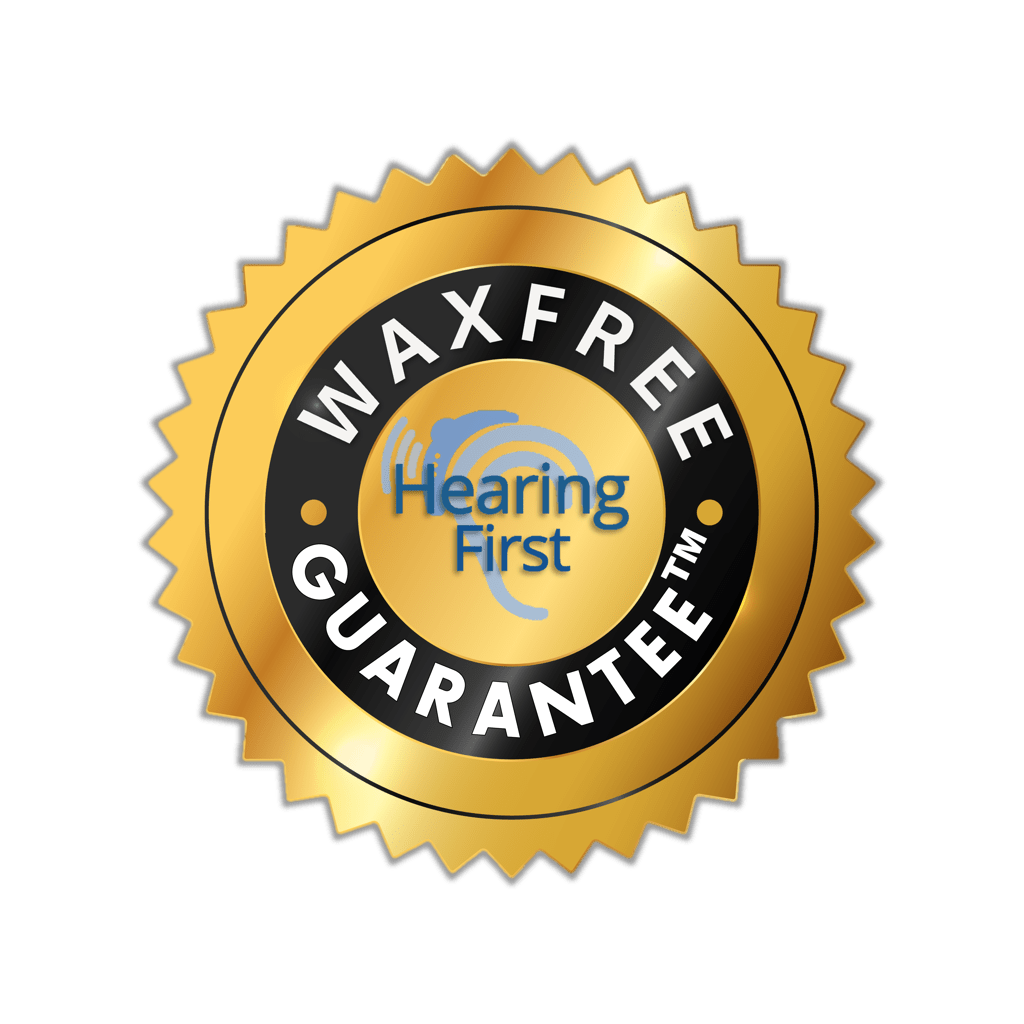
Our success rate is the best in the industry at 99.8%… The consistency of ear wax varies from individual to individual and is genetically determined. Some people have soft earwax, which is very easily removed using microsuction, whereas other people have very sticky or hard ear wax, which may need a combination of methods to remove. For very sticky or very hard ear wax, all of our Audiologists have been trained to use manual instruments as well as microsction. Manual instruments are very effective for removing hard and sticky ear wax. , and our Audiologists are only unable to remove ear wax in 0.2% (1 in 500) of cases when it is too uncomfortable for the patient (because they haven’t softened the way using our Waxbusting Protocol™), or the wax is attached to the ear drum and our Audiologist deems it unsafe to continue the procedure (and in all likelihood it could have been removed if the patient followed our Waxbusting Protocol™).
What Are Manual Instruments?
Manual instruments include the Jobson Horne probe, earwax hook, Rosen hook and crocodile forceps. Often when ear wax is especially hard or sticky, suction alone will not be enough, while manual instruments will be able to remove it. Many ear wax removal clinics only use microsuction or when microsuction is ineffective they give up and use irrigation (a modern version of syringing). However, the combination of microsuction and manual instruments is superior as it is safer and more effective.
Do You Use Syringing Or Irrigation?
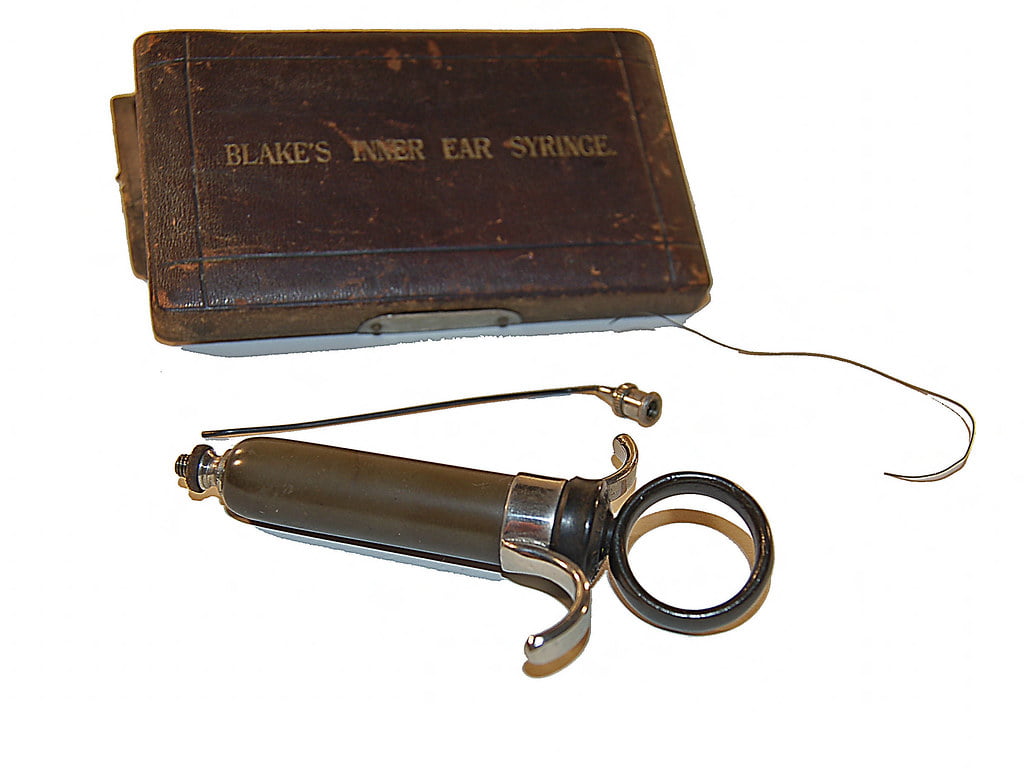
No. Syringing and irrigation used to be used widely by nurses in NHS GP practices to remove ear wax. Syringing was literally using a large metal syringe with a blunt tip to squirt water into the ear. Irrigation is a modernised method using an electric water pump like a “mini jet wash” to blast the wax from the ear. Both methods use the principal of “displacement”, where if enough water pressure is used, the ear wax will be “displaced” from the ear canal. One obvious flaw in this method is we want the ear wax to come out, but water is being squirted in – so in many cases the ear wax is pushed further into the ear canal!
Irrigation has been withdrawn as a service in most GP practices, partly because of a lack of funding, but also because irrigation has a high incidence of complications, which can include pain, bruising and bleeding of the canal at one end, and infection, hearing loss, tinnitus, facial paralysis and ear drum rupture (perforation) at the other end. This has been reported in the BMJ.
We believe that taking the easy way our and syringing or irrigating someone’s ear is not worth the risk, which is why at Hearing First we NEVER syringe (or irrigate).
Does Micro Suction Hurt?
Normally microsuction is completely painless. Our Audiologists are highly trained, and will gently draw the wax from your ear using a CE-certified medical suction unit. Bear in mind that as the machine is sucking wax through a thin tube, depending on the consistency of your wax it can sound like a child joyfully slurping a milkshake through a straw, tiny firecrackers crackling, or it may be almost silent. We recommend that you use a couple of squirts of Earol sterile olive oil spray or a few drops of olive oil in both ears, 4 times a day for 5 days before your appointment, or better still follow our Waxbusting Protocol™. This is to soften the earwax, reducing the chances of hard wax scratching or grazing the ear canal, ultimately making the procedure painless. If ear wax is very hard or sticky and microsuction is not effective, then manual instruments will need to be used, and you may feel a certain amount of pressure as the instrument pulls the wax out of your ear. Most important is the relief you will feel when the wax is gone and you can hear again!
How Soon Can I Be Seen?
We recommend that you use a couple of squirts of Earol 4 times a day for 5 days prior to your appointment. If you have already softened the wax we may be able to see you sooner, depending on how busy our clinics are. If you need treatment urgently because, for example, you are in pain, you’re attending an important event, or you’re going away on holiday and you need to be seen in less than 5 days, then we will do our utmost to clear your ears. We recommend that you soften your wax as much as you can before your appointment. We may need to use manual instruments if your wax is hard, but chances are if anyone can remove your ear wax, we can.
Guaranteed Results With Our Waxfree Guarantee™!
We’re the only national independent ear wax removal specialists that offer our unique Waxfree Guarantee™. When you follow our Waxbusting Protocol™, we guarantee to get your ear wax out on the first visit, or your next visit is free. You can find out more about our Waxfree Guarantee™ here: The Hearing First Waxfree Guarantee™ (opens in a popup).

Where Can I Get Microsuction?
We directly run a number of our own private ear wax removal clinics. Please visit our ear microsuction locations page for further details.
What Happens In A Microsuction Ear Wax Removal Appointment?
Here is a video which explains what happens when you book an ear wax removal appointment with Hearing First:
Can I get a microsuction even after ear surgery?
The short answer is “Yes”. After ear surgery, you may have been told to keep your ear dry and never have it syringed (irrigated), as there may be a risk of perforating your ear drum or causing an infection. Fortunately, microsuction doesn’t introduce any water into the ear, and providing that your surgery has healed, there should be no problem. As always, please check with your surgeon that he or she is happy for the procedure to be carried out.
Is microsuction safe for people with perforated ear drums?
The same applies as for the previous question. However, we recommend that you don’t use any ear drops or sprays prior to your appointment. Microsuction or manual instrument removal are the only two methods that are recommended if you have a perforation or have had ear surgery.
How Can I Book A Microsuction Ear Wax Removal Appointment?
Click on the “Book Microsuction Ear Wax Removal Now” button below, or click on the link to the booking page.
What Is The Difference Between Microsuction And Endoscopic Earwax Removal?
Microsuction is the removal of ear wax using suction and either the operating microscope or portable ENT microscope. Normally a 2 mm Zoellner tube is used, but a 1 mm fine end may be used when working close to the ear drum. Some ear wax removal clinics only employ people trained to use microsuction, but we train our Audiologists to use microsuction as well as manual instruments. Manual instruments include the Jobson Horne probe, earwax hook, Rosen hook and crocodile forceps. Often when ear wax is especially hard or sticky, suction alone will not be enough, while manual instruments will be able to remove the ear wax.
Endoscopic Earwax Removal is the removal of earwax using an otoendoscope or video-otoendoscope to view the ear canal and ear drum, and removal tools such as suction and manual instruments. Each ear wax removal method requires different skill sets and further training under an ENT consultant is recommended if ear wax will be removed endoscopically.
The greatest drawback with endoscopic earwax removal is the lack of depth perception. When an operating microscope or portable ENT microscope are used, the Audiologist is using both eyes and can judge the depth of the ear drum, the wax and the instrument. A video endoscope uses a single lens and the picture is viewed on a screen, and therefore cannot give any feeling of depth to the Audiologist, meaning that an important safety feature is non existant with this method.
Another drawback with endoscopic ear wax removal is that the 2.8mm endoscope and 2mm suction tube have to both fit in the ear canal at the same time. Patients with narrow ear canals may find having so much equipment in their ear quite uncomfortable, and the Audiologist may have difficulty manoeuvring the instruments to remove the wax due to the lack of space. When using a Vorotek O-Scope instead of an endoscope, the patient with narrow canals feels little to no discomfort, and the Audiologist is able to manoeuvre the suction tube without the endoscope getting in the way.
Several of our Audiologists have been trained in endoscopic ear wax removal and have extensively used both endoscopic and portable microscope methods, and all agree that the endoscopic method is great for making YouTube videos, but using the Vorotek O-Scope is safer, more comfortable and more effective.
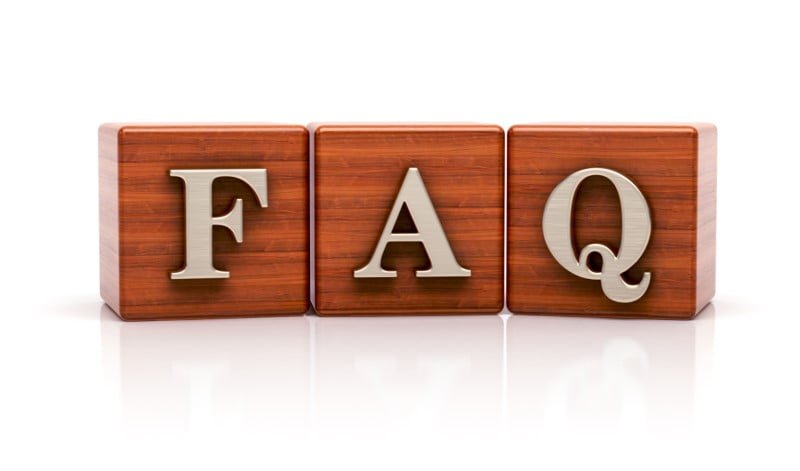
More Frequently Asked Questions
-
Why should I book an ear wax removal appointment with Hearing First?

1. Hearing First are the only ear wax removal provider to offer our Waxfree Guarantee™.
2. At Hearing first, we directly employ all of our clinicians – we are not a referral service.
3. All Hearing First clinicians are Audiologists who specialise in hearing – we do not employ pharmacy assistants, podiatrists or beauticians.
4. Our clinicians are highly trained and undergo regular professional development training so that they are up to date in the latest developments in Audiology.
5. At Hearing First all of our clinicians use the Vorotek O-Scope to carry out the wax removal procedure. Unlike loupes, a video-endoscope or the Tympa system, the Vorotek O-Scope maintains depth perception right up to the ear drum, and is therefore much safer than other visualisation methods.
6. All Hearing First clinicians are trained to use the microsuction as well as manual instrument methods, which are the safest and most effective methods of ear wax removal. -
What are the four methods of ear wax removal?
The four methods of ear wax removal are:
1. Irrigation (aka syringing)
2. Endoscopic ear wax removal
3. Microsuction
4. Manual instruments -
Do you use all four methods of ear wax removal?
There are four types of ear wax removal, but while they are all effective in their own way, they are NOT equal in terms of effectiveness and safety. No method of ear wax removal is 100% safe, though some are safer than others, and the safety greatly depends on the fundamental training of the practitioner – does the practitioner have extensive training in the ear, or are they a beautician, podiatrist, pharmacy assistant or other non-specialist technician?
Irrigation: We have NEVER used irrigation, as it has historically had a high incidence of ear drum perforation. We refer to it as “spray and pray”, because during the procedure the ear drum and ear canal cannot be seen as the ear canal is full of water. The relatively high pressure water jet is supposed to be directed at the ear canal wall, but can inadvertently strike the ear drum. This is especially dangerous where there is an ear infection (which can sometimes be silent – i.e. the patient does not experience pain), as the ear drum can be weakened by the infection and be even more at risk of rupture.
Endoscopic: Our founder, Jason Levy, as well as two Audiologists formerly on our staff have thoroughly evaluated the endopscopic method for over a year. While it has the advantage of better visualisation compared to ordinary loupes, and is good for making YouTube videos, it has several disadvantages, namely:
The endoscope is 2.8mm wide, while the suction tube is 2mm wide. The combination of these instruments can make complete wax removal impossible in a narrow ear canal, as well as potentially being uncomfortable for the patient; the endoscope battery gets quite heavy after prolonged use causing the hand to shake, and is therefore not suitable for a wax removal clinic that runs all day; and most importantly, the image from the endoscope is in 2D and therefore gives the clinician no sense of depth perception, making the procedure less safe.Microsuction: We will tend to use microsuction where ear wax has been sufficiently softened. This is considered the safest method of ear wax removal and when performed using a fixed or portable ENT microscope (such as the Vorotek O-Scope) which provides depth perception up the the ear drum, is the safest method of removing ear wax which is close to the end of the ear canal. In the case of ear wax which is very deep, our clinicians will usually use a fine end, which reduces the cross-section of the suction tube by half, and therefore allows four times less air flow, reducing the noise level and making the procedure much more comfortable.
Manual instruments: We tend to use manual instruments where ear wax is too firm, too sticky, or where it is stuck to the walls of the canal. This tends to be the case when the Hearing First Waxbusting Protocol™ has not been followed, but provides an effective method of wax removal in the case where the ear wax has not been sufficiently softened. While our clinicians are highly trained in the use of manual instruments, the main drawback is that the patient will tend to feel some pressure as the instrument engages with the ear wax. This pressure is only temporary, and the relief when the wax is out of your ear and your can hear again is worth it!
In some instances our clinicians will use a combination of microsuction and manual instruments as the ear wax can vary in consistency – some of it will have been there for longer and some of it will have been softened more by the wax softeners that were used. Whichever method is used, as long as you have followed our Waxbusting Protocol™, with our Waxfree Guarantee™ we promise to remove your ear wax at the first appointment, or the second visit is free!
-
Why do I need to soften my ear wax?
Our Audiologists are highly trained and experienced, and your safety is their utmost concern. The skin lining the ear canal ranges from 1mm thick at the entrance of the canal to 0.1mm thick at the ear drum. Ear wax is often hard and sticky (if it wasn’t hard and sticky it would come out by itself, as for the majority of people the ear is self-cleaning). Because the skin is so thin and delicate is is easily scratched or damaged by hard or sticky wax and that is the last thing we want to happen. There is also clinical research, which confirms that pre-softening earwax reduces the chances of dizziness or discomfort during a wax removal procedure.
-
When I use drops or spray my hearing gets worse. Should I stop?
No, don’t stop. The reason your hearing gets worse is because the drops or spray are filling in the tiny gaps around the wax. If the wax is dry, it will also expand as it softens and absorbs the wax softener (just like a raisin will plump up if it is put in a glass of water). This is a sign that the wax softener is working and will ensure you will have a comfortable, successful procedure. Please continue with the Hearing First Wax Busting Protocol™ until your appointment.
-
I’m unable to soften both ears due to my work / caring duties. What can I do?
This is something we have come across many times, and one of the reasons we offer a discount for single ear procedures. We recommend that you book for one ear and follow the Hearing First Wax Busting Protocol™ for one ear, and then do the same for the other ear afterwards.
-
I need ear wax removal urgently and don’t have time to soften it. What should I do?
If you are able to book 1 day in advance, we recommend that you talk to a chemist that sells Waxsol or Cl-ear™ Ear Relief Ear Drops over the counter and use that in both ears the night before and the morning of your appointment – it’s not as good as the Hearing First Wax Busting Protocol™, but it’s better than nothing! If you book on the day and haven’t been able to soften your ear wax at all, you will need to agree to a disclaimer and we will do our best to remove the ear wax, but unfortunately we cannot guarantee success in either of these cases.
-
I can’t find Earol, but I found something called Cl-ear Ear Spray – is that ok?
Yes. Cl-ear Ear Spray is almost equivalent to Earol, and can be used as part of our Waxbusting Protocol™. The difference between them is that Earol is in a sealed sterile container and can be used for up to 6 months, while Cl-ear Ear Spray is good to use for up to 28 days.
-
The Pharmacist says ordinary pharmacy grade olive oil with a dropper is just the same as Earol. Can I use that and still take advantage of the Hearing First Waxfree Guarantee™?
No, unfortunately you can’t. Earol incorporates a spray which micronises the oil into tiny droplets that penetrate the ear wax far more effectively than ordinary olive oil ear drops. Additionally, Earol should be used with the head held upright, which encourages the ear wax to move towards the ear canal entrance. Olive oil drops have to be applied with the head on the side, which encourages the ear wax to move closer to the ear drum, making the procedure more difficult.
Over the course of more than 50,000 ear wax removal procedures, we have developed the Hearing First Wax Busting Protocol™, which is safe and effective, and only this protocol will be accepted for the Hearing First Waxfree Guarantee™.
-
The Pharmacist says Otex Express is the best ear wax softener. Can I use that and still take advantage of the Hearing First Waxfree Guarantee™?
No, unfortunately you can’t. Otex spend a lot of money on marketing, and even Pharmacists can be persuaded by clever marketing campaigns. We have seen many patients with sore, red ear canals and peeling skin due to the peroxide that Otex Express contains. This causes unnecessary sensitivity and discomfort during a wax removal procedure.
Over the course of more than 50,000 ear wax removal procedures, we have developed the Hearing First Wax Busting Protocol™, which is safe and effective, and only this protocol will be accepted for the Hearing First Waxfree Guarantee™
-
The nurse / doctor / pharmacist recommended sodium bicarbonate ear drops as a cheap and effective wax softener. Can I use that and still take advantage of the Hearing First Waxfree Guarantee™?
No, unfortunately you can’t. The ear canal surface is designed to be acidic in order to discourage the growth of bacterial and fungal spores. While sodium bicarbonate is indeed effective at softening ear wax, it is alkaline and neutralises the acidity of the canal surface and can sometimes cause the upper layer of skin to peel off, especially when used for longer than 5 days. This can increase the chances of a painful outer ear infection (otitis externa), and make make the ear canal swollen and sensitive, making for an unnecessarily uncomfortable ear wax removal procedure.
Over the course of more than 50,000 ear wax removal procedures, we have developed the Hearing First Wax Busting Protocol™, which is safe and effective, and only this protocol will be accepted for the Hearing First Waxfree Guarantee™
-
Do you have any advice for ear care after ear wax removal?
When you use the Hearing First Wax Busting Protocol™, it greatly reduces the chances of scratches or damage to the ear canal surface. However, there may be microscopic scratches that we cannot see. We therefore recommend that you keep your ears dry for 4 to 5 days to allow the skin surface to start to recover. During this period, when you shower or wash your hair, you will need to get some cotton wool balls and Vaseline (or other petroleum jelly), saturate two cotton wool balls with the Vaseline, squish them up and place one in the outer bowl of each ear – this will prevent water from entering the ear canal.
Moving forwards, in order to reduce wax build up our advice has changed to keeping your ears dry as much as possible, rather than regularly applying olive oil. Our Director, Mary Levy studied this phenomenon over the course of 6 months and her research is published here.
-
I get itchy ears, especially after swimming or showering, and they sometimes get sore – what should I do?
We would always recommend booking an ear examination with an Audiologist or doctor before trying self-treatment, but a good product is Otinova, which can be purchased online in our web shop here. It contains several ingredients which are antibacterial and antifungal and reduce itching. If the itching continues despite 7 days treatment, we recommend you seek medical advice, as a prescription strength medicine may be necessary.
-
I’ve seen a plumber / beautician / nurse offering wax removal much cheaper – aren’t they just as good?
As with any private procedure, it is your choice where you go to get treatment, but as ear wax removal is an unregulated procedure you should be very careful who you allow in your ears. Here are some things to bear in mind:
o GP surgeries in the UK have largely stopped using nurses to provide ear wax removal services.
o Your ear drum is 0.1 millimetres (4 thousandths of an inch) thick, and while a repair operation can be carried out, success is not guaranteed. Remember, you have only one pair of ears. Look after them.
o Plumbers, beauticians, receptionists and other non-professionals will most likely have attended a one or two-day course in wax removal, and will not have an experienced mentor to directly supervise them after attending the course. One or two days will be the sum of their knowledge about ears. Do you really want them poking around in yours?
o All Hearing First Audiologists have studied Audiology for at least 6 months, and most have studied for at least 3 years. This includes the anatomy, physiology and pathology of the ear (the structure of the ear, how the ear works and how the ear can go wrong). Most of our clinicians also have a postgraduate Diploma in Pathology of the Auditory System and ENT Emergencies, which gives them further insight into ear care. We have been caring for people’s ears and their hearing for all our professional lives. This is what we do best. -
Who should be allowed to perform ear wax removal?
That’s a very good question. Ear wax removal procedures are unregulated, and any Tom, Dick or Harry can call themselves an ear wax removal practitioner. People only need to attend a one or two day course in ear wax removal and they can get professional indemnity insurance and open up a wax removal business with no experience.
The ear and the sense of hearing are very delicate and can be easily damaged – the ear drum is only 0.1 millimetres (4 thousandths of an inch) thick!
For the protection of the public, we recommend that in order to understand the risks associated with wax removal as well as other ear conditions that may at first appear to be a wax blockage but turn out to be something more serious, anyone carrying out ear wax removal should have at least 6 months’ training in the anatomy, physiology and pathology of the ear (the structure of the ear, how the ear works, and how the ear can go wrong). This would equate to a position with the title “Associate Audiologist” or “Audiologist Assistant”. This is the bare minimum, and these individuals should be working under the supervision of a Registered Hearing Aid Dispenser (an experienced Audiologist who is a healthcare professional registered with the HCPC), so that if they are unsure of something, they can call upon their mentor for advice. Other suitable professionals are ENT surgeons and ENT nurses who have a minimum of 3 years’ experience working under the supervision of an ENT surgeon.
We recommend that anyone carrying out ear wax removal should be on a relevant statutory professional register (such as the aforementioned HCPC or the GMC) or be supervised by a professional on a relevant statutory professional register, and have at least 6 months’ training about ears. This way you can be sure that that person will follow a professional code of conduct, performance and ethics, and have the depth of knowledge to be able to carry out the procedure to the highest level of safety.

